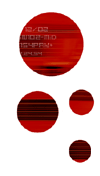

 |
 |
scientific program electroacoustic musics around set theory music analysis tools musicnetwork workshop professional week ircam forum workshops free software for music international multichannel sound forum performing arts and technologies dance and new technologies access to sound heritage thematic evenings demonstration stands artistic program set theory concert music in creation concert cursus concerts opera "one" sound installations open house weekend technologies gallery conferences demonstrations workshop-performances workshops and films ircam laboratories linux install-party concert distribution on internet associated events resonances night at glaz'art émilie simon at la cigale suguru goto reseaunances guided tours of ircam and the multimedia library resonances in pictures resonances 2002 
|
KIA NGMusic Imaging : The Challenge of Optical Music RecognitionAbstractThere are a vast amount of invaluable paper-based heritage, including printed music scores and handwritten manuscripts, that are deteriorating over time due to natural decaying of paper and chemical reaction (e.g. printing ink and paper), similar to many other paper-based items in library and museum archives. Digitisation has been commonly used as a possible tool for preservation. Although the digital copy may not conserve the original document, it can preserve the data in the document, with the advantage of easy duplications, distribution and digital processing. This talk presents the development of an Optical Music Recognition (OMR) system to transform paper-based printed music scores and handwritten music manuscripts, into a machine-readable symbolic format, and reports various ongoing activities of the MUSICNETWORK project (http://www.interactivemusicnetwork.org) to advance the progress of music imaging. As we know, document imaging, analysis and understanding is extremely complex, not to mention the additional complexities inherent to Music notation. Currently there are various commercially available products as well as research systems for OMR. An idealise system which could reliably "read" and "understand" music notations could provide a wide range of applications for interactive multimedia music, bringing paper-based music to the new multimedia era. This presentation discusses general obstacles and complexities for a comparative study of OMR systems and proposes a Quick-Test for OMR. |
|||||||||||||||||||||||||||||||
 |
Organization Committee Copyright Ircam-Centre Pompidou 2003 |